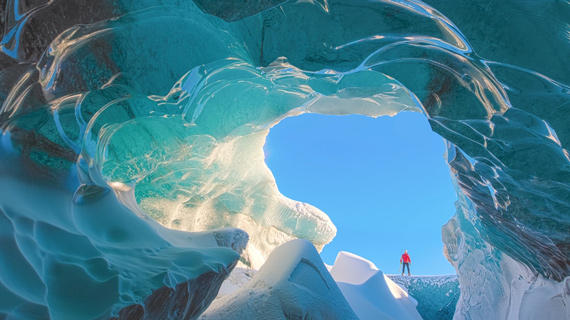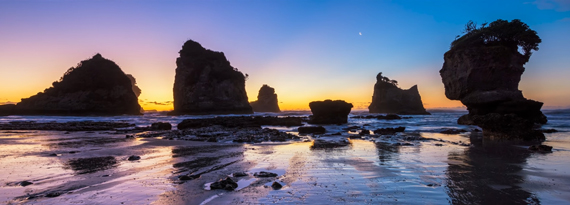Landscape photography is one of the most popular genres of photography out there, drawing a lot of interests from beginners and enthusiasts. However, many landscape photographers are guilty of making the same mistakes time and again. Landscape photographer Tom Mackie shares some classic mistakes that landscape photographers commonly make and how you can avoid them:
1. Not Having a Proper Tripod
Photographers tend to go all out when it comes to buying a camera body or a lens. But then they go out and buy the cheapest tripod they can find. Using a cheap, unstable tripod might make you worse off than not using a tripod. So, get yourself a good, sturdy tripod that can support your camera and lens properly.
Also, consider the height of the tripod. Having a tripod that is at least as tall as you are will save you from continuously bending over to have a look through the viewfinder. Your back will thank you.
2. Composing With Your Camera on a Tripod
Having your camera fixed on your tripod every time will restrict you to compose your shots from your eye level only. Take the camera out of the tripod and then walk around with it. Try out different perspectives and angles and once you have the composition finalized, set the tripod up to mount your camera.

3. Lack of Thought in Composition
A well-thought-out composition is what differentiates a brilliant shot from just a good shot. When composing an image, make sure that you’re telling a story to your viewers. Also ensure that you’re drawing your viewers’ attention to your primary subject in the frame.

4. Wonky Horizons
When composing your shot, you might think that you’re holding the camera straight. But by the time you press the shutter button, it can get tilted, resulting in a wonky horizon.
Some might prefer to use the in-display level guide, but Mackie likes to use a spirit level on the hot-shoe. It’s all about personal preference. Whatever you use, make sure that the horizon is straight. Tilted horizons are distracting.
“You can correct these later in Lightroom quite easily and quickly, but it’s nice to get it done in the field.”
5. Overusing Wide Angle Lenses
Landscape photography isn’t just about putting a wide angle lens on the camera and getting as much of the scene in the frame as possible. In fact, if the elements in your frame don’t gel together to form a dynamic image, they become lost. Go ahead and try using other focal lengths. Something like a 24-70mm lens can be quite useful, as it offers a versatile and practical range.
“I’m cropping out things that don’t actually add anything to the scene.”

6. Not Including Dimensions in Your Image
Including an interesting foreground, mid-ground, and background is a good way to ensure that images appear dynamic. They add depth and help in guiding the viewer through the image. Without dimensions, an image becomes flat and unappealing.

7. Using the Wrong Kind of Light
“There is no such thing as poor lighting, only the poor choice of subject for that particular light.”
Learn to choose what to photograph based on the type of lighting available. For instance, during overcast lighting, Mackie prefers to photograph woodlands, forests, gardens, and waterfalls. Your subject matter may be great but if the lighting isn’t suited for that subject, the image won’t be great.

8. Not Planning the Shot
Most photographers are guilty of making this mistake. They often turn up at a location, take a photo, and head out, irrespective of the lighting conditions. What’s really important to understand is that every scene appears the best in some particular type of lighting. Study the location, plan for that particular type of lighting, and then be at the location when the lighting is right.
9. Having Unwanted Details in the Shot
Besides paying close attention to the subject, also keep an eye out to the edges of your frame. You might have unnecessary details like branches, power lines, and rocks popping out of nowhere.
10. Blowing Out the Highlights
Highlights are particularly difficult to recover if you blow them out. You thus need to pay extra attention to this fact when taking your images. A convenient and accurate way to ensure that your highlights aren’t getting blown out is by referring to the histogram. Try to have an even histogram so that you capture as much information as possible without clipping the edges.
To ensure that your highlights are not blown out, you can do any of the following:
- Take multiple exposures and merge them in post-processing.
- Expose for the highlights and bring up the shadows later.

Are you guilty of making any of these landscape photography mistakes?
Go to full article: Landscape Photography: Classic Mistakes to Avoid
What are your thoughts on this article? Join the discussion on Facebook
PictureCorrect subscribers can also learn more today with our #1 bestseller: The Photography Tutorial eBook
The post Landscape Photography: Classic Mistakes to Avoid appeared first on PictureCorrect.
from PictureCorrect https://ift.tt/2LhFDj4
via IFTTT






0 kommenttia:
Lähetä kommentti